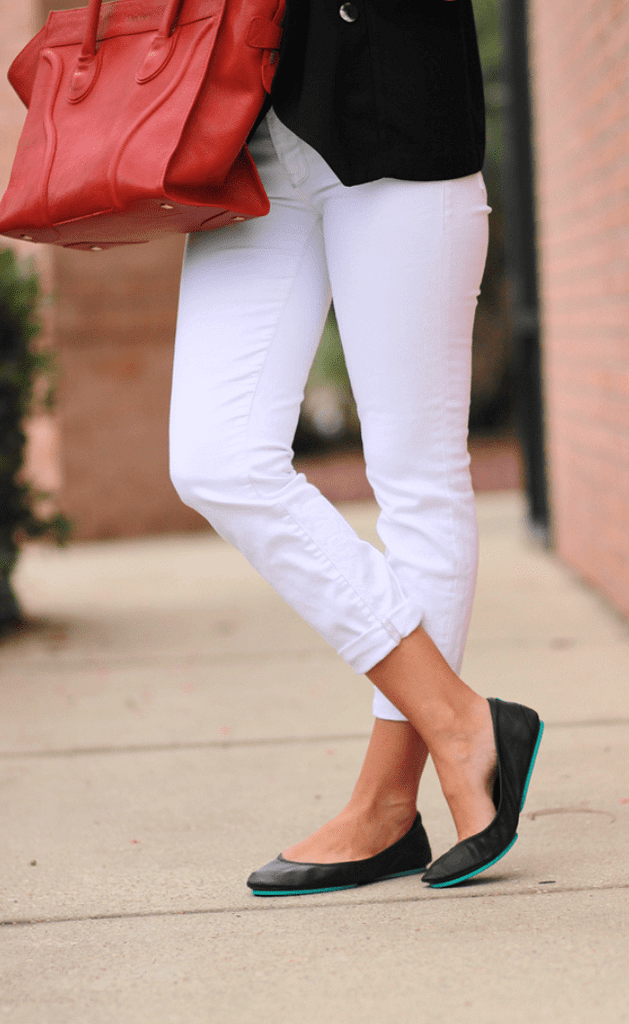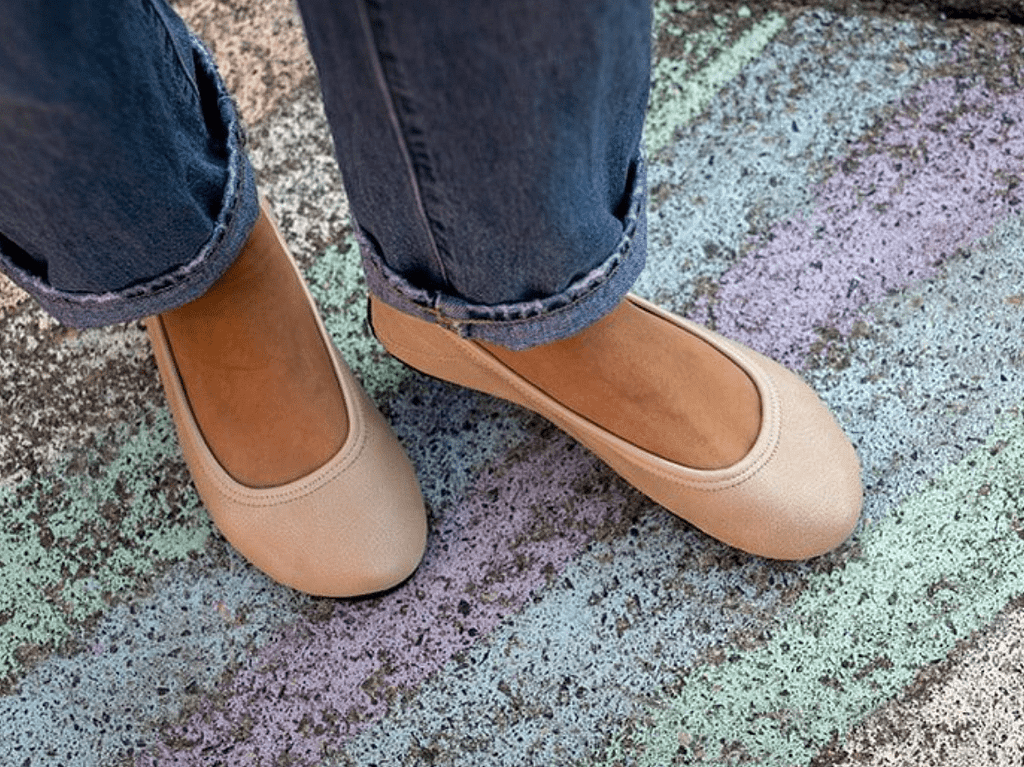Several years ago, I was searching for some cute flats to wear to a homeschool conference. I wanted to dress nicely but comfortably because I would be on my feet all day long traversing the vendor hall. I loved the look of ballet flats. But nothing was fitting my feet. They were all too wide in the heel, too tall in the toes, too uncomfortable in general, or just too ugly.
Coincidentally, a friend was selling raffle tickets to win a pair of Tieks as a way to raise funds for an international adoption. I bought a couple of tickets to support her endeavor and then explored the company website. There, I discovered raving reviews from women with all foot shapes claiming they could walk for miles and stand for hours in these comfortable, cute, Italian leather ballet flats. I was intrigued. Then I saw the price tag. Winning that raffle was the only way I would ever be getting a pair of Tieks.

Please note: None of the links in this post are affiliate links. I provide them only for clarification and inspiration.
Looking For An Alternative
When I did not win, I decided that there must be something comparable out there that was a little more budget friendly. I searched the internet and discovered SoftStar shoes. These were slightly more budget friendly at the time. But in exploring their site, I discovered articles on the benefits of wearing barefoot shoes as well as the many benefits of simply going barefooted.

Thus began my adventures in barefooting. (I plan to write about that at some point.)
Still, I wanted cute shoes for certain occasions. With my newfound knowledge, they would now need to be not only cute and comfortable, but also barefoot/minimalist in style. That last qualification actually made the search a bit easier; barefoot style shoes do not require factory molded soles. And in my searching, I discovered that there were sewing patterns for shoes.
I could make my own ballet flats!

Adventures in Shoe Making
I found and purchased this pattern. Cheri, the pattern maker, included links to videos, suggestions for soling materials, and a ton of other helpful information. She strongly advised sewing a felt mockup to perfect the fit. I did this and found the shoes to be too tall in the toe box. (Apparently I have low volume toes.) I emailed Cheri and she quickly responded with alteration suggestions. That did it!
I quickly stitched up several pairs of ballet flats in various colors and with different soling materials. I altered the patterns to be wider in the toe box and to better fit my feet. Each pair taught me something new about shoe design and function.
Additionally, I made a few pairs of boots and moccasins from suede, corduroy, and wool. Thrift shopping became a treasure hunt as I searched for skirts, jackets, and sweaters I could transform into shoes.
Experimenting With Soling Materials
I loved using ToughTek for soles. This rubberized fabric could be stitched to the uppers using a regular sewing machine. It was highly flexible, moving with my feet and allowing me to really feel the ground. It was like walking on clouds. Many baby shoe patterns recommend this soling material.
I then tried using crinkle sole rubber. That looked a little more like store-bought shoes and was much more durable. However it was heavier and not nearly as flexible. It also required heavy-duty cutting tools and strong glue. To compensate for the weight of the soles, I added a bit of elastic to the uppers. That helped them stay on my feet better.



Later, I discovered Plasti-Dip. I painted several coats onto the bottom and sides of some simple lace-up shoes I had made. The result was a super comfortable shoe with a flexible, long-lasting, repairable sole. But my application skills left a lot to be desired. My plasti-dipped shoes were not exactly pretty.


The Challenge
The biggest challenge I found with my homemade shoes was that they did not handle rain very well. Even though the toughtek was waterproof, water would seep in through the seams. The crinkle soles were only 4 mm thick – not high enough to keep my feet out of puddles. The plasti-dip offered the most water resistance because I painted it up onto the sides of the shoes. But it was ugly.
Of course, our ancestors did not have molded rubber for their shoes. So I continued to research historical shoe making. Waterproofed leather, lanolized wool, and even seal skins were often used in cold, wet weather. So much to explore!
In the meantime, I purchased two pairs of factory made barefoot shoes for wet and cold weather. These were primarily for hiking – a pair of sandals, and a pair of winter boots. So I would wear my homemade shoes in dry, cool weather. When it was warm, I had plenty of barefoot sandals. And in cold, wet weather, or on hot asphalt or rough terrain, I wore factory made barefoot shoes. I had footwear for every occasion. So I took a break for a few years.
Then Came Wedding Bells
With our son getting married this spring, I decided I wanted some cute ballet flats to wear to the wedding. This time I delved into my stash of sewing and crafting goods and found:
- A piece of cotton painter’s cloth leftover from another project;
- Variegated embroidery floss;
- A few scraps of unbleached muslin;
- A bit of heavy duty interfacing;
- A length of satin cording;
- An old, discarded, blacksmithing apron.
The only thing I did not have was glue. Thankfully, the local hardware store had small containers of contact cement for less than $12.
And this was the result:



I love the way they turned out! The leather soles are amazing. And while it may have been possible to find a $12 pair of shoes at a discount store or thrift shop, they would not have fit my feet well. I could never have purchased a pair of comfy, barefoot style, leather soled, ballet flats for that price.
Super Powers!
I am extremely grateful that my mom taught me how to sew when I was young. I am also grateful that my parents gave me an old sewing machine just before I got married. That machine is approximately as old as I am and still going strong. Over the years it has enabled and inspired me to sew dresses, costumes, pajamas, bags, curtains, bras, and so much more. I have also used it to alter thrifted clothing by shortening hems, adding linings, customizing the fit, and even adding pockets.
Now that I also know how to sew shoes, I feel like I have super powers!

